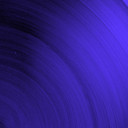-
 silas
posted in technical issues • read more
silas
posted in technical issues • read moreA detailed and helpful explanation, Gilberto – thanks so much. The professor's overly simplified comments on the emergence of sidebands described in terms of our brain tricking us was perhaps not the ideal way to convey the idea. He almost certainly did not mean it to be interpreted quite the way it came across to me, but provided ample opportunity for it. You know, I was certain as well that the sidebands would be evident in a spectrogram, clearly visible and measurable.
And contrary to his explanation that audible sidebands begin to emerge above low freq. oscillations of 20 cycles per sec, I very clearly hear them as low as 15, maybe 13 cycles per sec when oscillating a 170Hz sine wave. At 15 cycles, one distinctly perceives a major 3rd above the fundamental. But I'm curious, what change would I need to make to the patch in order to have the tone rather than oscillate, switch on and off, hard, from 0 amplitude to full on? Would the sidebands sound the same?
The patches are a good starting point on my end. It seems something like the "binaural beats" phenomenon can be recreated here – but in this basic Pd patch, this is not aurally 3-dimensional (how complex would adding dimensionality be? Quite, I'd imagine).
Perhaps this is what you're demonstrating already, but can the spectrogram here be compartmentalized into revealing, in separate spectrograms, the fundamental in one, and the sidebands in another? Are sidebands another form of harmonics or distinct and separate?
Kind regards,
Silas -
 silas
posted in technical issues • read more
silas
posted in technical issues • read moreThanks Gilberto! That's really just fantastic. Yes, I may have questions later, but this allows me to run the experiment I desire successfully. It's greatly appreciated.
Essentially, I had taken an online introductory course in Digital Sound Design, taught by professor/composer Steve Everett where he'd described sidebands in a way that portrayed them, under certain conditions, as an artifact of our hearing, i.e. not really occurring but rather something which our brains construct. Basically, he seemed to say that an LFO oscillating the amplitude of a sine wave at a rate of 1-20 times per sec, would produce tremolo as expected, however, once the rate increased above 20 times per sec, sidebands were emerge that weren't actually there, but rather were our brains way of interpreting the information. To test this, I thought I try a hard tremelo in Pd, as my first foray with PureData. Any thoughts?
-
 silas
posted in technical issues • read more
silas
posted in technical issues • read moreFor my initial foray into to Pd, I'd like to make a simple tremolo circuit. This would be using a LFO (0–20Hz) that oscillates any frequency with varying degrees of amplitude modulation from full volume down to zero decibels (i.e. a totally on then off sound, producing a harsh staccato sound). Does a schematic for this patch exist somewhere, or could anyone provide guidance?
Many thanks!
-
 silas
posted in technical issues • read more
silas
posted in technical issues • read moreI discovered that even though changing the delay isn't removing the distortion, increasing the block size does, improving at each step up from 64. With a sample rate of 44.1K and a delay of 80 (though regardless where I set the delay, it has no impact on distortion) listening at block size 128 and 256, the tone improves but it's still very distorted. But at 512 there's almost distortion / clipping/clicking-sound free. Only at 1024 is it completely clean. So I'm continuing forward running at mostly 1024. What's this maybe indicating? Thanks for the patience in this slow start....
-
 silas
posted in technical issues • read more
silas
posted in technical issues • read moreYes, that's the one: ASIO4ALL. The other is just something I have installed on my laptop that I know interacts with the ASIO4ALL driver, called REW (Room EQ Wizard) which along with a measurement mic, is utilised for understanding room acoustics and loudspeaker driver performance. It's not running when using Pd.
-
 silas
posted in technical issues • read more
silas
posted in technical issues • read moreHi Gilberto,
Thank you - yes, that's what's happening (though I wrote "Media" instead of MIDI in the subject line originally) and, unfortunately, it's still the problem I'm having. If it's pure distortion, where might the configuration be off? I'm using ASIO and the internal soundcard of the laptop.
Kind regards,
Silas -
 silas
posted in technical issues • read more
silas
posted in technical issues • read moreGetting a start with pd today, and my initial issue is the test after installation is producing just distortion instead of a sine wave. This must be wrong.
On a windows machine with internal soundcard using ASIO, Not at all far into sound manipulation yet, but have software that does involve the ASIO somehow - REW (Room EQ Wizard - used for room acoustic measurements and loudspeaker measurements). Please advise? Fairly non-technical here, as compared to many of you, I'm sure. Thank in advance...
